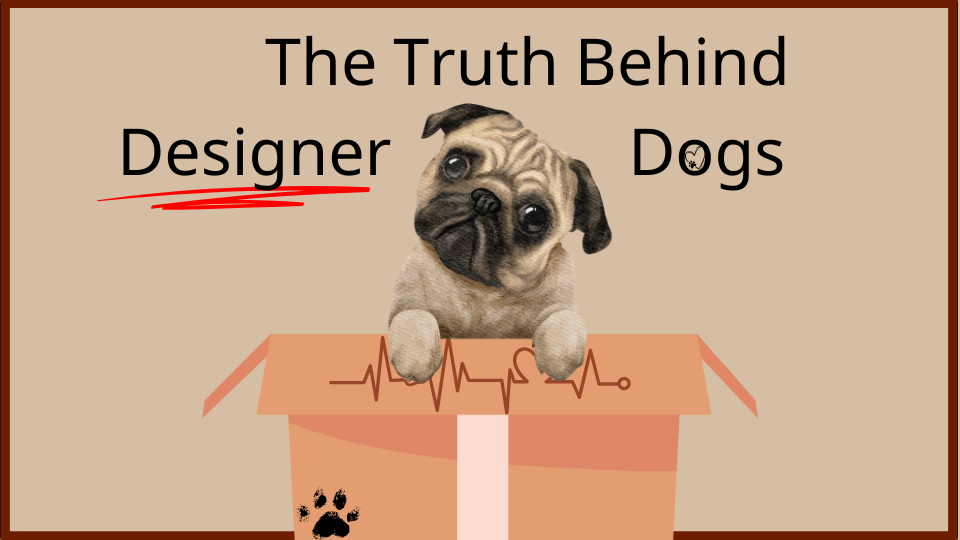Designer Dogs are all the rage nowadays, from lovable Labradoodles to charming Cockapoos. The rise of designer breeding started roughly 20,000 years ago, however most modern dog breeds derived 300-400 years ago. Designing dogs has given scientists the power to choose a dog’s shape, and size, as well as their type of face, ears, and whether or not their tail is cropped. Many say they love and adore man’s best friend, yet they continue strategically manipulating their features through breeding at the cost of the dog’s health and comfort.
What Are Designer Dogs?
“Designer dogs involve [the] mating of two separate dog breeds such as a Poodle and a Labrador to obtain certain desirable characteristics from each breed,” said Dr. Jennifer Ledesma, a primary veterinarian at Seacliff Animal Hospital.
In the early 1980s, a man named Wally Conron tried to help a blind woman by creating a new dog breed. The woman needed a guide dog that would not affect her husband’s allergies, so Conron created the Labradoodle, a mix between a Poodle and a Labrador.
Conron said, “[he] opened up a Pandora’s Box and created Frankenstein’s monster.”

(Diana Haronis)
If even Conron himself regrets making one of the first designer dogs, what is so bad about them that Conron deemed the Labradoodle “Frankenstein’s monster?”
Why Designer Dogs Became a Fad
It turns out that there are many reasons why Conron would regret the trend he started—and the owners of designer dogs recognize this.
Diana Haronis, an owner of two designer dogs said, “with so many dogs abandoned and being put to death in shelters, breeding specific dogs for money and vanity seems wrong – I have found that once a certain breed goes out of style, sadly many end up in shelters. I adopted both of my dogs from rescues for this reason.”
This neglect of designer dogs is an active problem that shelters are trying to combat. The city council of Los Angeles (LA) as of April 9th, 2024 voted to stop issuing breeding licenses due to their city’s shelters being overwhelmed with dogs. Across the six animal shelters in LA, there are currently more than 1,500 dogs with only 737 kennels to shelter them. Along with the major influx of dogs, the amount of dogs getting euthanized has also increased.
“All dogs can face health problems. However, it has become well-known that poor breeding practices can contribute to these issues remaining prevalent within certain breeds. It is important when considering breeding that we look at the individuals and assess whether they are a good example of what we want in the breed,” said Dr. Ledesma.
“All brachycephalic breeds such as French Bulldogs and English Bulldogs face breathing issues simply because of their conformation,” Dr. Ledesma said.
But the problems of brachycephalic—flat faced dogs with small or short skulls—dogs do not stop. According to The Humane Society of The United States, brachycephalic dogs can face infections from the wrinkles in their skin, they cannot tolerate exercise and heat well, and because of their head-size, most of these dogs must be born via c-section. As a result of the shape of their bodies, they also face back and joint issues. Not only do they struggle with these issues, but also face digestion issues, dental issues and reduced mobility.

The Retro pug has become a solution to the many health issues brachycephalic dogs face. These pugs are non-brachycephalic and while they are still designer bred, they are made with the purpose of avoiding the common health problems that normal pugs face.
However, the brachycephalic breeds are not the only designer dogs that face health problems. Both small and large designer dogs often face a number of health problems too. Smaller breeds will develop dental issues, breathing problems and pancreatitis. Whereas larger designer dogs will have much shorter life spans, possibly face hip dysplasia, arthritis, premature deafness and more.
These poor dogs typically have a higher chance of developing behavioral problems; which is one of the main reasons that people give up their dogs.
“Breeding an Australian shepherd (a herding breed) and a poodle [can lead to the] development of anxiety characteristics in the breed due to

being bred for herding” said Dr. April Esquivel, a practicing vet at Warner West Pet Clinic.
Designer dogs can be seen as significantly less calm and may demonstrate anxious or stressed behaviors as well as being less sociable and friendly.
However, not everything about designer dogs is entirely negative, there are positive attributes to designer dogs and designer dog breeding. When asked for these positive qualities, Esquivel said,“Designer dogs have been bred to be smaller, more manageable and less allergenic to humans.”
Though there are sad truths behind designer dogs, awareness and education can turn the tide towards more responsible pet ownership and better care for designer dogs. By choosing to adopt from shelters, and supporting ethical breeding practices, dog owners can help combat the darker aspects of the designer dog industry. In doing so, we can make sure that every dog, regardless of its lineage, receives the love and care it deserves.








